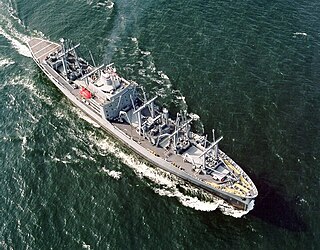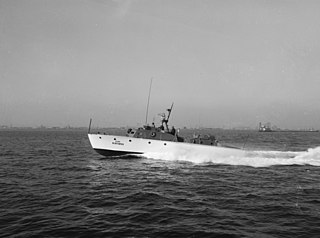 W
WThe wooden-hulled excursion steamer Westport was built in 1911 by William McKie of East Boston, MA., and owned by the Eastern Steamship Lines, Inc., of Boston India Wharf at the start of World War I. The Navy inspected the ship in the 1st Naval District on 1 February 1918 for possible use as a passenger and freight carrier, and she was taken over on 14 November 1918. Five days later, her name was changed to Adrian-to avoid confusion with the Naval Overseas Transportation Service (NOTS) freighter Westport - and, given the classification Id. No. 2362, was initially assigned to the 1st Naval District.
 W
WAlhena (AKL-38) was a Design 381 built for the United States Army as FS-257. The Army vessel was U.S. Coast Guard crewed, serving in the Southwest Pacific during World War II.
 W
WUSS Arlington (LPD-24), a San Antonio-class amphibious transport dock, is the third ship of the United States Navy to be named for Arlington, Virginia, the location of the Pentagon and the crash site of American Airlines Flight 77 during the terrorist attacks on 11 September 2001. Like her sister ships, USS New York and Somerset, she is named in commemoration of the attacks. Steel taken from the Pentagon after the attacks is displayed aboard in the ship's museum.
 W
WUSS ATR-31 was an ATR-1-class Rescue Ocean Tug of the United States Navy during World War II, and later the Peruvian Navy. Her fate is unknown.
 W
WThe SS Cape Jacob is a steam turbine-driven ship, first launched as the SS California. It was to be used by the Maritime Administration, and was delivered in 1962 and put under contract to the States Steamship company. The ship was later transferred to the Military Sealift Command, and put into reserve status temporarily. It was then transferred to active duty as a prepositioning ship.
 W
WCrash Rescue Boat is a name used in the United States to describe military high-speed offshore rescue boats, similar in size and performance to motor torpedo boats, used to rescue pilots and aircrews of crashed aircraft. During World War II these rescue boats, armed with light anti-aircraft guns for self-defense, saw extensive service with the British Royal Air Force (RAF) and United States Army Air Forces (USAAF).
 W
WUSS Hassayampa was a Neosho-class fleet replenishment oiler in service with the United States Navy, and the United States Merchant Marine from 1955 to 1991. A veteran of the Vietnam and First Gulf War, she served for 36 years before being laid up in the Suisun Bay Reserve Fleet in California. Her keel was laid on 13 July 1953.
 W
WThe Henry J. Kaiser class is an American class of eighteen fleet replenishment oilers which began construction in August 1984. The class comprises fifteen oilers which are operated by Military Sealift Command to provide underway replenishment of fuel to United States Navy combat ships and jet fuel for aircraft aboard aircraft carriers at sea. One ship, operated by the United States from 1987 to 1996, was sold to Chile in 2009 and commissioned into the Chilean Navy in 2010; and two ships were scrapped in 2011 while still incomplete.
 W
WThe second USS Housatonic was the Southern Pacific freighter El Rio temporarily converted for planting the World War I North Sea Mine Barrage.
 W
WUSS Iona was a wooden-hulled, harbor tug of the United States Navy that served during World War II.
 W
WThe John Lewis class is a future class of fleet replenishment oilers which began construction in September 2018. The class will comprise twenty oilers which will be operated by Military Sealift Command to provide underway replenishment of fuel and limited amounts of dry cargo to United States Navy Carrier Strike Groups, Amphibious ready groups, and other surface forces to allow them to operate worldwide.
 W
WLanding helicopter assault (LHA) is the United States Navy's hull classification symbol for the general purpose helicopter-carrying amphibious assault ships of the Tarawa and America classes.
 W
WLanding platform helicopter (LPH) is a term used by some navies to denote a type of amphibious warfare ship designed primarily to operate as a launch and recovery platform for helicopters and other VTOL aircraft. As such, they are considered a type of helicopter carrier.
 W
WThe United States Navy has over 490 ships in both active service and the reserve fleet, with approximately 90 more in either the planning and ordering stages or under construction, according to the Naval Vessel Register and published reports. This list includes ships that are owned and leased by the U.S. Navy; ships that are formally commissioned, by way of ceremony, and non-commissioned. Ships denoted with the prefix "USS" are commissioned ships. Prior to commissioning, ships may be described as a "pre-commissioning unit" or PCU, but are officially referred to by name with no prefix. US Navy support ships are often non-commissioned ships organized and operated by Military Sealift Command. Among these support ships, those denoted "USNS" are owned by the US Navy. Those denoted by "MV" or "SS" are chartered.
 W
WUSS LSM-297 was a LSM-1-class medium landing ship built for the United States Navy during World War II.
 W
WThe 600-ship Navy was a strategic plan of the United States Navy during the 1980s to rebuild its fleet after cutbacks that followed the end of the Vietnam War. The plan, which originated with Republican leaders, was an important campaign plank of Ronald Reagan in the 1980 presidential election, who advocated a larger military and strategic confrontation with the Soviet Union.
 W
WA Naval Inactive Ship Maintenance Facility (NISMF) is a facility owned by the United States Navy as a holding facility for decommissioned naval vessels, pending determination of their final fate. All ships in these facilities are inactive, but some are still on the Naval Vessel Register (NVR), while others have been struck from that Register.
 W
WThis article incorporates text from the public domain Dictionary of American Naval Fighting Ships.
 W
WUSS PGM-9 was a PGM-9-class motor gunboat in service with the United States Navy during World War II.
 W
WUSS PGM-10 was a PGM-9-class motor gunboat that was in service with the United States Navy during World War II, and transferred to the Philippine Navy shortly thereafter.
 W
WUSS PGM-32 was a PGM-9-class motor gunboat in service with the United States Navy during the end of World War II, and briefly post-war.
 W
WThe United States Navy reclassified many of its surface vessels in 1975, changing terminology and hull classification symbols for cruisers, frigates, and ocean escorts.
 W
WSan Felipe (YFB-12) (ex-Engineer) was a United States Army steel tugboat that later served as a ferryboat in the U.S. Navy and as an Imperial Japanese Army transport during World War II.
 W
WThe Self Defense Test Ship (SDTS) is one of the assets of the US Navy. It is a refurbished ship that is in some cases operated by remote control; that capability is designed to support self-defense engineering, testing, and evaluation.
 W
WThe Stevens Battery was an early design for a type of ironclad, proposed for use by the United States Navy before the American Civil War. One full-sized example was begun but never completed due to lack of funding.
 W
WUSNS Trenton (T-EPF-5),, (ex-Resolute) is a Spearhead-class expeditionary fast transport vessel. Spearhead-class ships are used to support overseas operations, conduct humanitarian aid and disaster relief, and support special operations forces. This type of vessel also has an aviation flight deck and can operate in shallow waters. Trenton completed acceptance trials on 13 March 2015 and was delivered to the United States Navy on 13 April 2015.
 W
WU.S.S. SC-744 was an SC-497-Class submarine chaser of the United States Navy during World War II. She was sunk by a Japanese Kamikaze in 1944.
 W
WYard Repair Berthing and Messing were large unpropelled barges used by the "Brown Water Navy" of the US during the War times, as bases for specialized river boats. They contain limited shop facilities to permit ship's force repair work. It is fitted with a storeroom and workshops. All utilities are supplied from the pier. It has a reinforced bow for ocean towing. These vessels bore the hull classification symbol YRBM.
 W
WUSS YP-10 was a wooden-hulled patrol vessel in commission in the fleet of the United States Coast Guard as CG-194 from 1925 to 1934, and in the fleet of the United States Navy as YP-10 from 1934 until 1941.
 W
WUSS YP-15 was a wooden-hulled patrol vessel in commission in the fleet of the United States Coast Guard as CG-149 from 1925 to 1933, and in the fleet of the United States Navy as YP-15 from 1933 until 1945.
 W
WUSS YP-16 was a wooden-hulled patrol vessel in commission in the fleet of the United States Coast Guard as CG-267 from 1925 to 1934, and in the fleet of the United States Navy as YP-16 from 1934 until 1941. She was sunk by Japanese aircraft during the Japanese attack on Guam.
 W
WUSS YP-17 was a wooden-hulled patrol vessel in commission in the fleet of the United States Coast Guard as CG-275 from 1925 to 1933, and in the fleet of the United States Navy as YP-17 from 1933 until 1941. She was captured by Japanese forces during the Japanese attack on Guam.
 W
WUSS YP-18 was a wooden-hulled patrol vessel in commission in the fleet of the United States Coast Guard as CG-263 from 1925 to 1934, and in the fleet of the United States Navy as YP-18 from 1934 until 1938.
 W
WUSS YP-19 was a wooden-hulled patrol vessel in commission in the fleet of the United States Coast Guard as CG-177 from 1925 to 1934, and in the fleet of the United States Navy as YP-19 from 1934 until 1945.
 W
WUSS YP-45 was a wooden-hulled patrol vessel in commission in the fleet of the United States Coast Guard as CG-133 from 1925 to 1934, and in the fleet of the United States Navy as YP-45 from 1934 until 1945.
 W
WUSS YP-49 was a wooden-hulled patrol vessel in commission in the fleet of the United States Coast Guard as CG-182 from 1925 to 1934, and in the fleet of the United States Navy as YP-49 from 1934 until 1943.